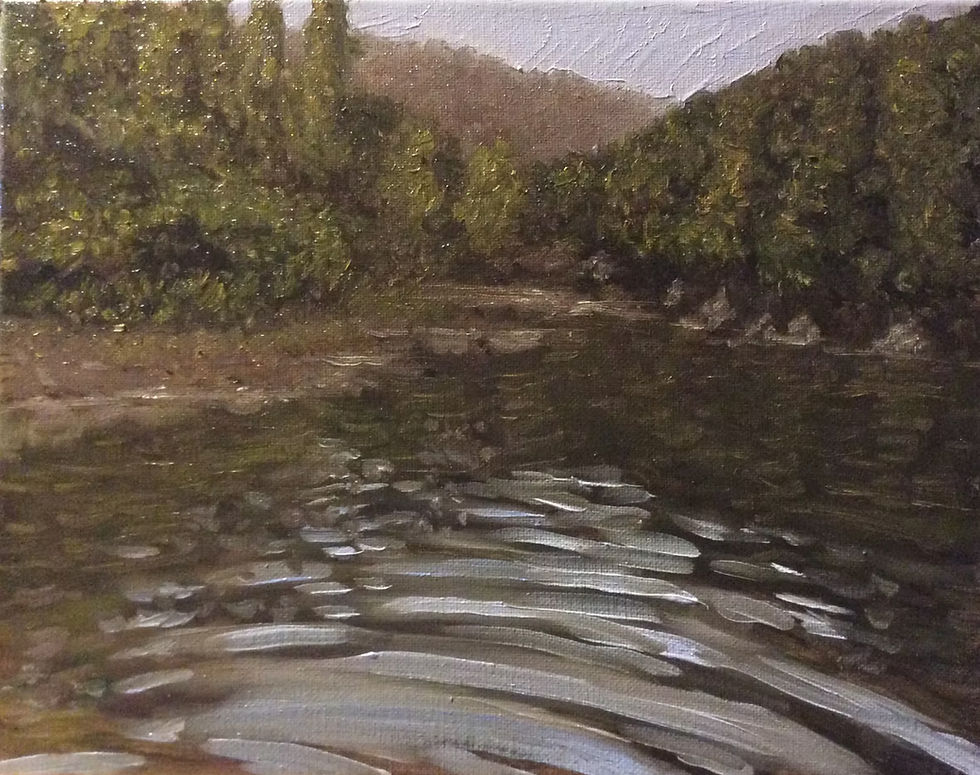Shades of Gray: The Power of Grays in Painting
- tmichaelniemanart

- Dec 7, 2024
- 3 min read
In the world of painting, the use of gray often goes unnoticed by the untrained eye, overshadowed by vibrant reds, blues, and yellows. However, grays play a pivotal role in creating depth, balance, and harmony in artworks. Mastering the subtle nuances of gray can elevate a painting from ordinary to extraordinary, making it an essential skill for artists at any level.

Gray: The Unsung Hero of Color Theory
Gray is more than just a neutral color—it is a bridge between extremes. While it may lack the boldness of primary or secondary colors, it offers a palette of possibilities that enrich a composition. By varying the intensity, warmth, or coolness of gray, artists can manipulate mood, light, and space in their paintings.
Unlike pure black or white, gray introduces softness and sophistication, allowing transitions between tones to feel seamless. Its versatility means it can stand alone as a focal point or subtly support other colors, enhancing their vibrancy.
The Role of Grays in Painting
1. Creating Depth and Atmosphere
Grays are crucial for establishing depth and atmosphere in a painting. In landscape art, for example, distant mountains or hazy skies often rely on muted grays to convey distance and softness. This technique, known as atmospheric perspective, uses grays to simulate how light and air scatter in the distance, adding realism and dimension.
2. Balancing Bold Colors
Too much intensity in a painting can overwhelm the viewer. Grays provide a calming counterbalance to bright or saturated hues. When used skillfully, gray tones can ground a composition, making the brighter colors appear more dynamic without becoming overpowering.
3. Conveying Emotion
Grays are deeply emotive. From warm, comforting grays to cool, somber ones, they evoke a range of feelings. Artists often use grays to communicate subtlety and introspection, adding a layer of emotional complexity to their work.
4. Highlighting Light and Shadow
Grays are essential for rendering realistic light and shadow. In portraits, still lifes, or any work that relies on three-dimensionality, a variety of grays helps to model forms and make them appear tangible. By blending grays with surrounding colors, artists can create soft edges and realistic shading.
Prominent Artists and the Mastery of Grays
Throughout art history, many masters have demonstrated the power of grays:
James McNeill Whistler: Known for his tonal compositions, Whistler’s “Nocturne in Black and Gold" and other works showcase how muted grays can create mood and harmony.
Giorgio Morandi: His still lifes are studies in subtlety, where grays unify everyday objects into poetic compositions.
Anders Zorn: Renowned for his limited palette, Zorn used grays masterfully to balance his famous “Zorn palette” of black, white, red, and yellow ochre.
Tips for Using Grays in Your Own Work
1. Mix Your Own Grays: Avoid relying on pre-mixed gray paint. Mixing your own using complementary colors or black and white allows you to control the warmth, coolness, and tone.
2. Experiment with Temperature: Warm grays (with hints of red or yellow) and cool grays (with touches of blue or green) can dramatically shift the mood of your painting.
3. Layer Transparently: Build depth by glazing thin layers of gray over other colors. This technique is especially effective in atmospheric or abstract work.
4. Use Grays as a Unifying Element: Incorporate subtle touches of the same gray throughout your composition to tie disparate elements together and create harmony.
Conclusion
Gray is the painter’s secret weapon—a nuanced and versatile color that plays an integral role in creating balance, depth, and emotion. It allows artists to explore subtle transitions and provides a canvas for other colors to shine. Whether you're a beginner or a seasoned professional, mastering the use of grays will not only enhance your technical skills but also deepen your creative expression.
So next time you pick up your brush, don’t overlook the grays—they might just be the key to unlocking the full potential of your painting. Also if viewing a painting that you enjoy, take a moment to look for the various shades of gray you can spot throughout the scene.



Comments